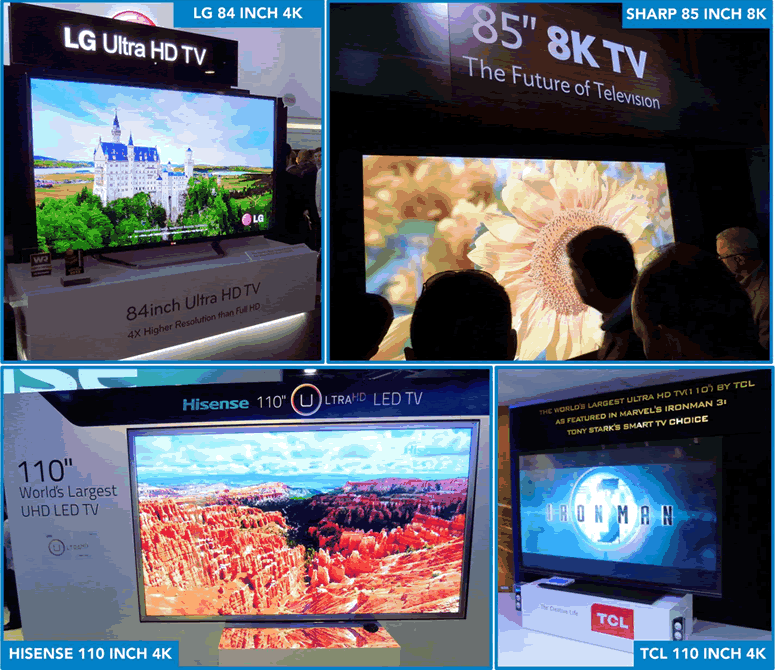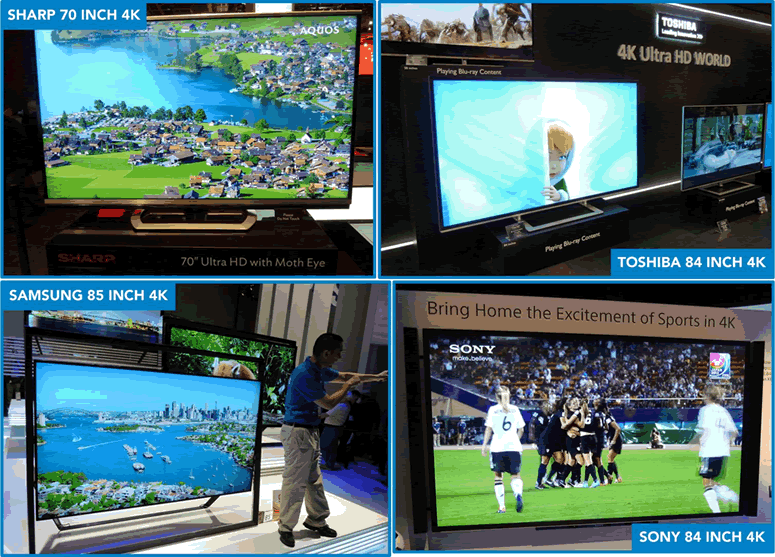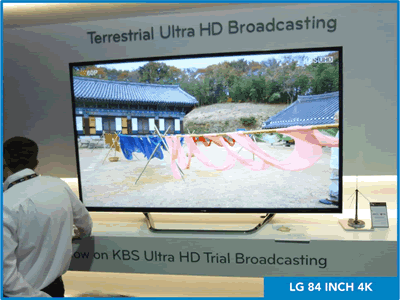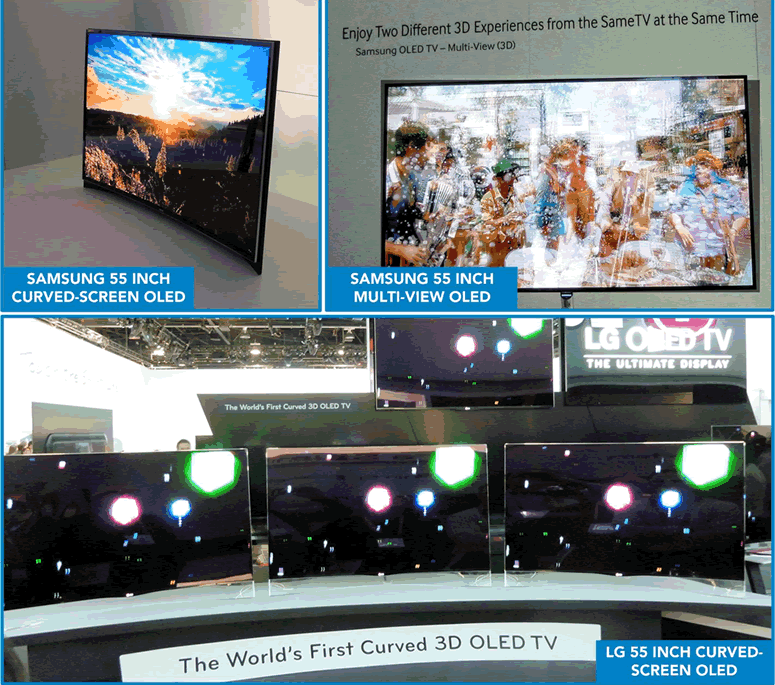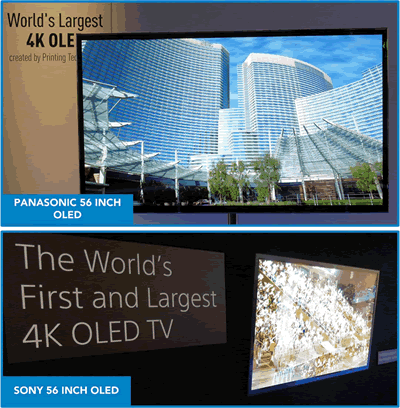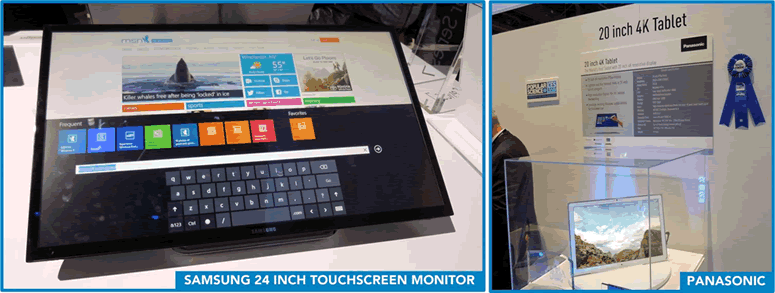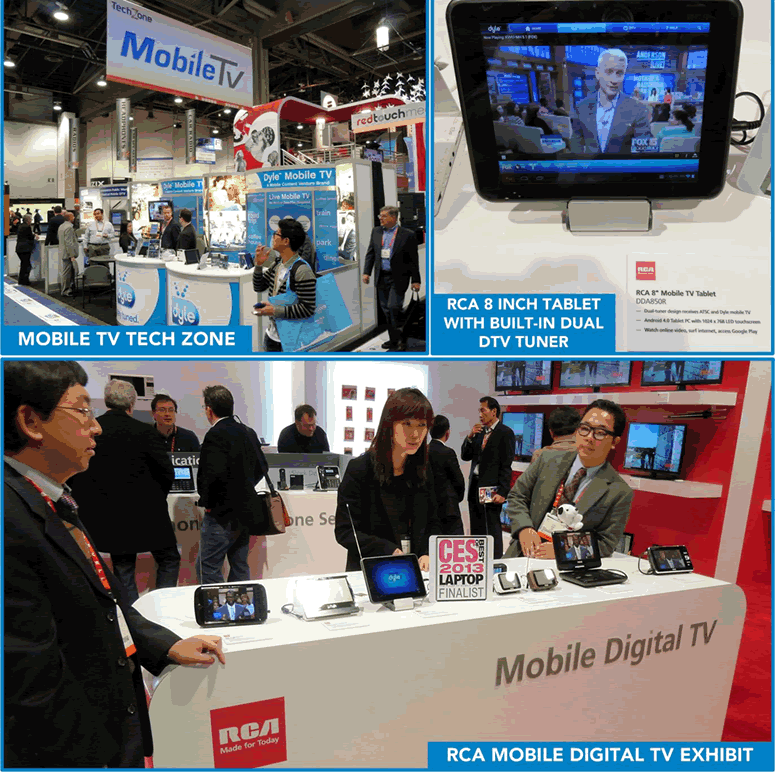|
|

|
Display Technology Takes Center Stage at 2013 International CES
It wasn't all
that long ago when the hot item making news at the annual International
Consumer Electronics Show (CES,
January 8-11, 2013, Las Vegas, Nev.) was 1080-line high-definition
TV (HDTV) display technology, now a staple of CE devices with widespread
adoption in U.S. households. This year's show has kicked things up a notch with 4k display technology, so-called "Ultra HDTV," boasting four times the pixel count of a 1080-line set. Given below is some information on these super-high resolution set offerings as well as an overview of other hot technologies at this year's show. Ultra HDTV displays - Every major flat-panel display manufacturer had demonstrations of 4K Ultra HDTV displays, ranging in size from 20 inch up to the "world's largest" 110 inch offerings. An array of products are shown in the photos below. In addition to 4K panels, Sharp was also demonstrating an 8K panel (photo below) which has 16 times the pixel count of 1080 line HDTV. In the photo, notice how close the attendees are getting to the set - they were looking up close to see how sharp this display really is. While all of these sets display a spectacular image, the fact remains that for now, content and delivery options to 4K sets remains a challenge. In the LG booth, there was information on an experimental terrestrial broadcast delivery of 4K content done in conjunction with the Korean Broadcasting System (KBS). A demonstration of this technology in South Korea utilized HEVC video encoding to and broadcast a compressed 4K signal (35 Mbps) in a 6 MHz channel (UHF channel 66, 782-788 MHz).
Organic
LED (OLED) displays- Somewhat less prevalent but equally exciting,
many manufacturers at this year's show were demonstrating large
OLED displays. OLED technology has been previously demonstrated
at CES on much smaller devices and by fewer companies; this felt
like more of a "break-out" year for OLED, which offers
extremely high contrast ratios and the ability to support products
with curved displays by virtue of its inherent flexibility (see
the pictures below). Another exciting
OLED product, also by Samsung, is the 55-inch multi-view display,
which can simultaneously show two separate 3D high-definition programs.
This capability, being demonstrated in the Samsung exhibit, requires
the use of active glasses which also have built-in headphones (without
using the glasses, both images are seen simultaneously as shown
in the photo). A switch on the glasses enables the viewer to switch
between program "A" and program "B." This multi-view
capability is enabled by the extremely high contrast ratio and fast
switching time inherent in the OLED display. Samsung indicated that
this multi-view set would be available for consumers in the second
quarter of 2013.
Touch-screen
computing - Tablet and touch-screen computing also appeared
to have a breakout year at CES, fueled primarily by the advent of
the Windows 8 operating system. A 24-inch touch computer monitor
was being shown by Samsung (see photo below) which included a tilting
stand that adjusts from vertical to nearly flat, making it possible
to easily use a touch keyboard. Panasonic debuted a 20-inch tablet
computer with a 4K resolution display (see photo). This device was
demonstrated during one of the keynote presentations at CES (featuring
the CEO of Panasonic, Kazuhiro Tsuga) as having significant new
applications in architectural design and photography. Mobile DTV
- At this year's show attendees were able to learn about mobile
DTV at the Mobile TV Tech Zone, a special technology exhibit located
in the central hall of the Las Vegas Convention Center (see photo
below). This exhibit included new products and demonstrations from
Dyle TV, the Mobile Emergency
Alert System, the Mobile500
Alliance, and the ETRI research center from Korea. The next
issue of TV TechCheck will be on January 28, 2013. |
|||
|
|
|||
